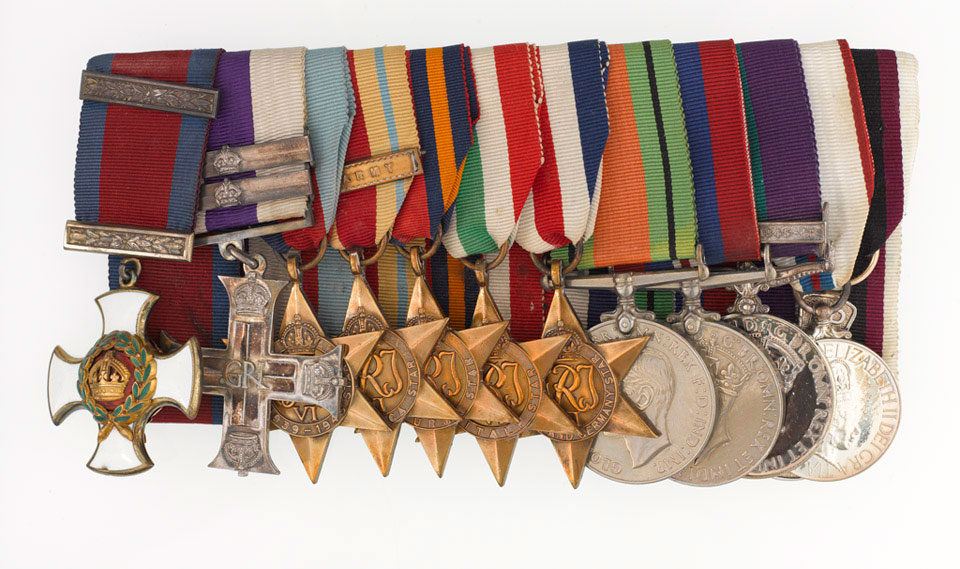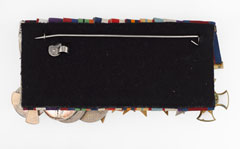
Online Collection
Medal group of Brigadier Peter Young, Bedfordshire and Hertfordshire Regiment, 3 Commando, 1939-1977
This medal group includes: Distinguished Service Order; Military Cross with two bars, '1943' and '1944; 1939-45 Star, Africa Star 1940-43, with clasp, '1st Army'; Burma Star 1941-45; Italy Star 1943-45; France and Germany Star 1944-45; Defence Medal 1939-45; British War Medal 1939-45; General Service Medal 1918-62, with clasp, 'Palestine 1945-48'; Queen Elizabeth II Silver Jubilee Medal 1977; and Polish War Cross 1939-45.
Brigadier Peter Young (1915-1988) was both a gallant soldier and a distinguished military historian. Educated at Monmouth School, he recalled how he was inspired to join the Army by the statue of King Henry V in Monmouth. After reading Modern History (specialising in Military History) at Trinity College, Oxford, he was commissioned into the Bedfordshire and Hertfordshire Regiment in 1939. He was wounded at Dunkirk, but on recovery joined No 3 Commando and took part in the raids on Guernsey 1940, Lofoten and Vaagso 1941, being awarded the Military Cross for the latter in 1942.
As Second-in-Command of No 3 Commando at Dieppe he was the only Commando officer to reach his objective without loss of life among his men. For his conduct at Dieppe Young received the Distinguished Service Order. In 1943, in Italy, he was awarded two bars to his Military Cross. He went on to fight in Burma, and in 1945 took command of No 1 Commando. After the War he was seconded to the Arab Legion, commanding 9th Regiment in Jordan from 1953-1956. In 1954 he was awarded the Jordanian Order of Al Istiqlal, 3rd Class.
On leaving the Army in 1959 Peter Young was appointed Reader in Military History at Royal Military Academy Sandhurst (RMAS), where he remained for ten years.
It was at RMAS that Brigadier Young laid the foundations of the modern study of the military history of the English Civil War, a subject on which he wrote some fourteen books. His vast knowledge and interest, however, extended into all periods of military history; his works 'Storm at Sea' recounting his experiences with the Commandos, and 'Bedouin Command' recalling his time with the Arab Legion. He amassed a large archive which was donated to the National Army Museum by his widow, Joan, in 1988. This archive was consulted during his lifetime and after his death by many leading historians and academics.
Although a brave soldier and a brilliant scholar, Peter Young is perhaps remembered by most as the man who founded the now famous English Civil War re-enactment society, 'The Sealed Knot'. In 1969 the impending publication of his 'Edgehill, the Campaign and the Battle' led to his arranging a reconstruction of the Battle of Edgehill. From this beginning The Sealed Knot was formed, dedicated to promoting interest in the Civil War by the recreating of battles and sieges of the seventeenth century and by scholarly endeavour. Peter Young became its 'Captain General'.
NAM Accession Number
NAM. 1988-11-9-1
Copyright/Ownership
National Army Museum Copyright
Location
National Army Museum, Conflict in Europe gallery
Object URL
https://collection.nam.ac.uk/detail.php?acc=1988-11-9-1


